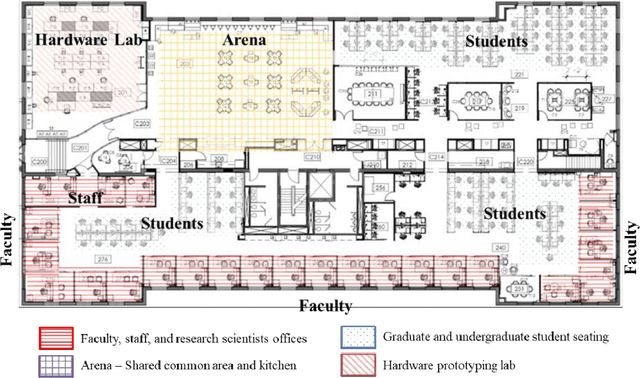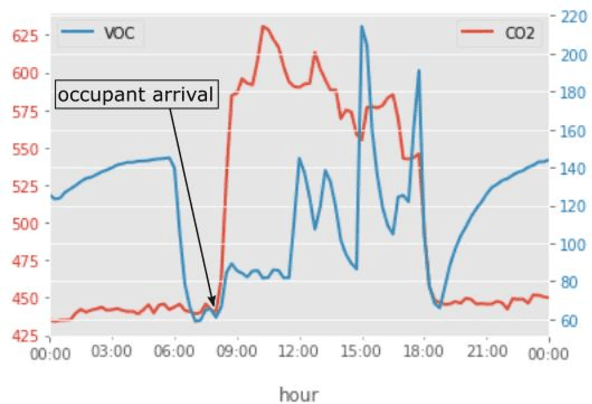Using Statistical Models to Detect Occupancy in Buildings through Monitoring VOC, CO$_2$, and other Environmental Factors
Paper and Code
Mar 07, 2022


Dynamic models of occupancy patterns have shown to be effective in optimizing building-systems operations. Previous research has relied on CO$_2$ sensors and vision-based techniques to determine occupancy patterns. Vision-based techniques provide highly accurate information; however, they are very intrusive. Therefore, motion or CO$_2$ sensors are more widely adopted worldwide. Volatile Organic Compounds (VOCs) are another pollutant originating from the occupants. However, a limited number of studies have evaluated the impact of occupants on the VOC level. In this paper, continuous measurements of CO$_2$, VOC, light, temperature, and humidity were recorded in a 17,000 sqft open office space for around four months. Using different statistical models (e.g., SVM, K-Nearest Neighbors, and Random Forest) we evaluated which combination of environmental factors provides more accurate insights on occupant presence. Our preliminary results indicate that VOC is a good indicator of occupancy detection in some cases. It is also concluded that proper feature selection and developing appropriate global occupancy detection models can reduce the cost and energy of data collection without a significant impact on accuracy.
 Add to Chrome
Add to Chrome Add to Firefox
Add to Firefox Add to Edge
Add to Edge